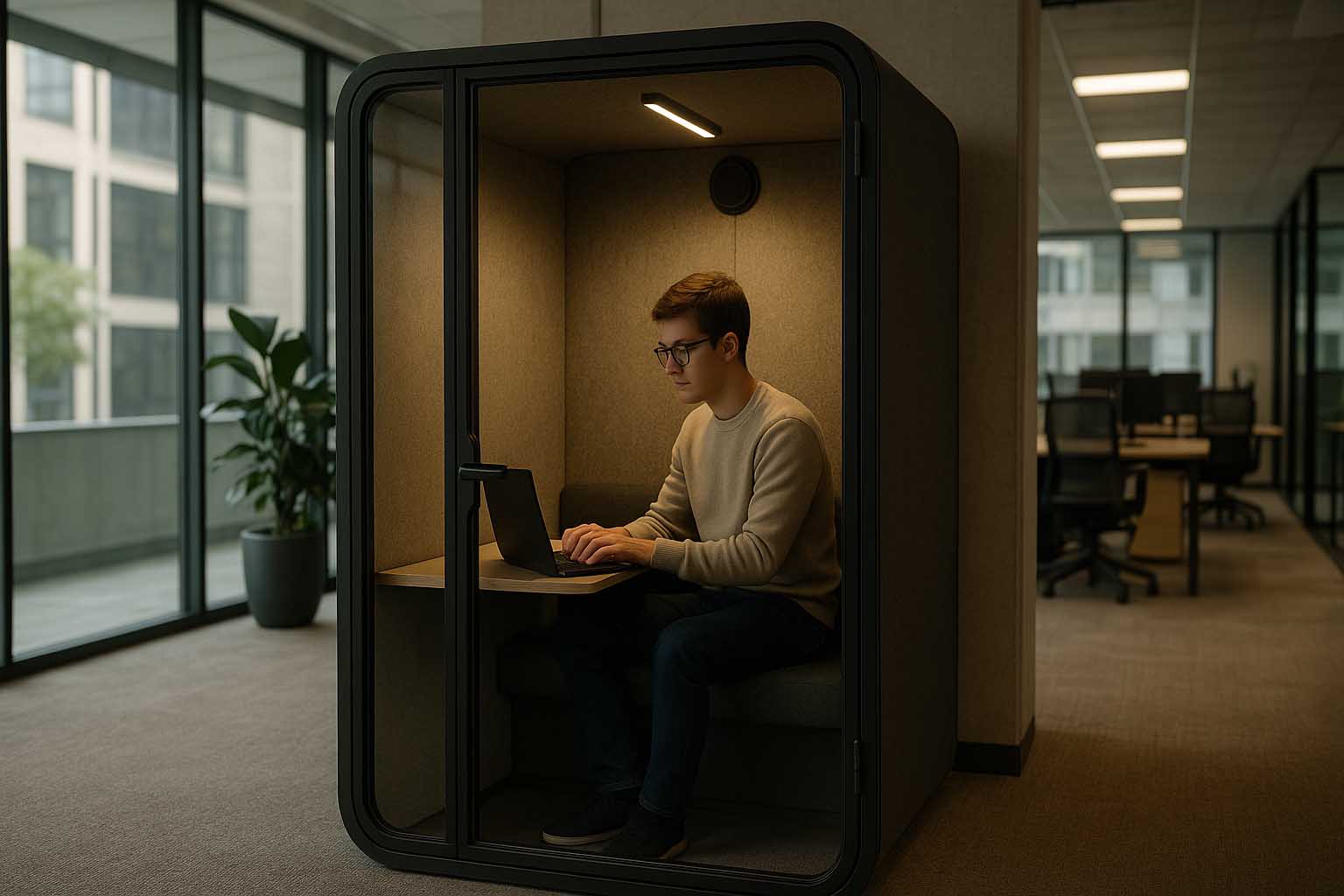Why Setting Boundaries Improves Productivity
Clearer Boundaries, Better Productivity
A large portion of today’s global workforce operates across different time zones, coworking spaces, and digital platforms. In such a setup, it’s easy to get caught in a constant flow of chats, emails, and video calls. Without clear boundaries, the quiet time needed for deep thinking and creative problem-solving gets disrupted. As a result, project progress slows down and team energy gradually fades.
On the other hand, when there are well-defined rules for when to work, rest, and handle requests, we create a more humane and productive environment. This article highlights how boundaries aren’t obstacles they are bridges that support better work, more energized employees, and stronger teams, from Berlin to Buenos Aires, Tokyo to Toronto.
At a Glance
Clear boundaries allow more quiet time for focused tasks, clarify expectations among teammates, and help shift smoothly from work to rest. When everyone knows when the door is open and when “do not disturb” applies, stress decreases and motivation increases.
This article explains how both individuals and organizations benefit: (1) improved focus, (2) a healthier workplace culture, (3) reduced fatigue, and (4) more consistent outcomes. It includes real examples from coworking, remote, and hybrid settings around the world.
Understanding Work Boundaries
A boundary simply refers to rules that separate time, attention, and energy for work and personal life. It may be physical like shutting the laptop at a set hour or non-physical, such as only replying to emails during scheduled blocks. In coworking and remote environments, setting clear expectations is essential to avoid the sense of being online 24/7. Used wisely, boundaries support natural rhythms, time limits, and emotional needs.
Studies from international HR firms and European universities show that deep focus increases while absenteeism drops in workplaces with clear rules on response times and rest. This isn’t about limiting creativity but offering a safe space for ideas to grow.
Why Boundaries Matter in Global Teams
Today’s teams often include people from different cultures and continents. Without shared guidelines, one person’s noon may mean midnight for another. A basic rule like avoiding meetings before 9 a.m. in anyone’s time zone shows respect for each person’s schedule. Coordinated planning builds trust and strengthens collaboration.
In coworking hubs, reminders like quiet zones, phone booths, and “focus hour” signs limit interruptions. These policies signal that every member has the same right to a space that supports concentration. This setup improves not just productivity but also the atmosphere of mutual respect.
How Boundaries Boost Output
- Focused Flow – When you know no one will call for the next two hours, it’s easier to dive into writing, analyzing data, or designing without distraction.
- Faster Decisions – With specific time blocks for meetings, teams prepare agendas in advance and make quicker choices within the given time.
- Better Energy – The body follows a natural rhythm that asks for breaks every 90 minutes. Scheduled rest helps sustain energy throughout the day.
- Clear Measurement – When work and rest periods are defined, it’s easier to track performance and meet realistic deadlines.
These points reinforce each other. Strong focus leads to faster results, which in turn boosts motivation. That renewed energy helps maintain those same boundaries moving forward.
How to Establish Clear Boundaries
It begins with a specific message. A team leader might post a rule like, “We only respond to non-urgent chats from 10 a.m. to 4 p.m.” Then, set a focus hour with all notifications muted. This isn’t about limiting interaction, it’s about protecting time for thinking deeply.
As members adjust, they begin to feel the benefits of uninterrupted attention. This is especially useful in hybrid setups where some work from home and others from the office. When everyone respects the same limits, it prevents resentment or feelings of disconnection.
Real-Life Practices Across Industries
A fintech startup in Amsterdam introduced “No-Meeting Wednesday.” At first, there was hesitation. But after a month, the feature release rate rose by 12 percent. Developers had three uninterrupted hours of coding, leading to better outcomes.
In a creative agency in São Paulo, they created “Creative Block Friday” from 2 p.m. to 5 p.m. No last-minute design requests were allowed during that time. It became a block for quiet brainstorming or sketching. Client satisfaction scores jumped by 15 percent as ideas became more refined before presentation.
Common Barriers and How to Address Them
Some companies hesitate to apply boundaries, worried it might lower responsiveness. A simple solution is to tag messages based on urgency: immediate, today, or this week. With this method, everyone knows when a reply is truly needed.
Another challenge is personal guilt feeling like you “should” always be available. The best remedy is role modeling. When managers shut down their computers on time, they give others permission to do the same without shame.
Applying It in Coworking Spaces and Remote Work
In shared offices, a small flag on a desk red for “deep work” and green for “available for quick questions” can signal availability without needing a word. This silent signal builds a culture of respect. Team members work together to preserve quiet without long explanations.
For remote work, status messages become key. You can set an auto-reply such as, “I’m focusing on strategic planning until 3 p.m. local time; will respond afterward.” This lets others know you’re not ignoring them it simply maintains transparency and trust.
Culture and Global Differences Matter
Each country views time differently. In some places, staying late is standard. In others, dinner with family takes priority. To stay fair, teams should agree on which hours give the best overlap. A global company in Sydney with a branch in Nairobi settled on a shared six-hour window, enough for major discussions while still preserving solo task time.
Respecting national holidays is also part of setting boundaries. When employees see their local breaks honored, they return refreshed and ready to contribute at a high level.
Connecting Work and Personal Well-Being
Boundaries aren’t just for spreadsheets they protect physical and mental health. When there’s space for a quiet dinner or workout, the immune system gets stronger, and burnout risk drops. A Canadian university found that professionals who logged off at fixed times had lower cortisol levels by week’s end.
It also helps with relationships. If your partner knows work ends at 6 p.m., it’s easier to say yes to an evening walk. Open schedules often mean open conversations too.
Observed Success Stories
A distributed research firm with members across six continents ran “focus sprints” twice a day, 45 minutes each. In three months, their publication output rose by 18 percent. Team members shared that the sprint format helped them avoid multitasking and zero in on one task at a time.
At a software team in Copenhagen, a “quiet Monday morning” policy was added. Only 90 minutes passed between logging in and the first meeting. Their bug fix rate increased by 20 percent. Clients also noticed the quicker update turnaround.
A clear boundary isn’t a wall that divides a team it’s a door that opens and closes at the right time, protecting each person’s energy, focus, and clarity. When everyone respects each other’s time, focus improves, stress declines, and natural productivity rises across any region, role, or workplace.








